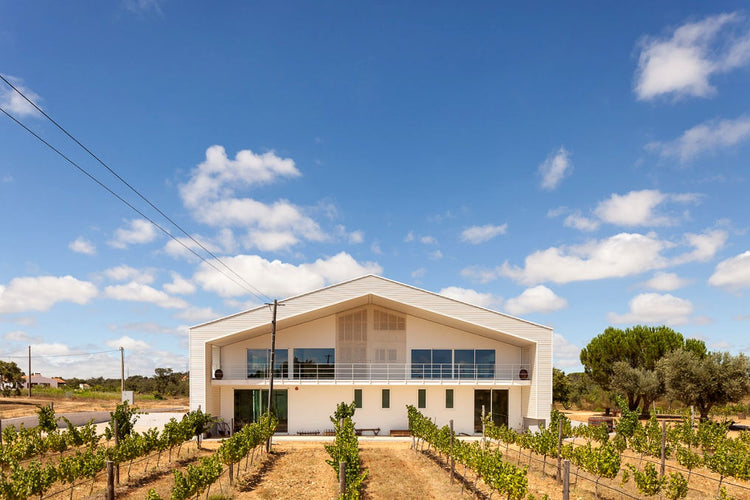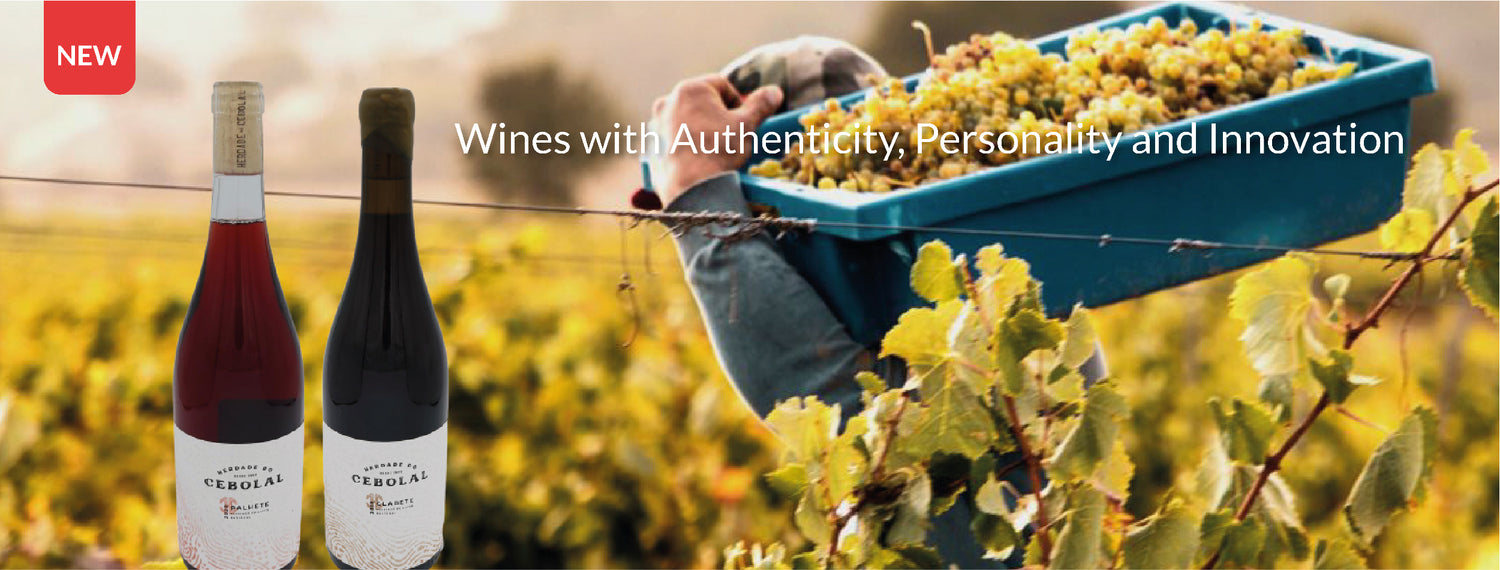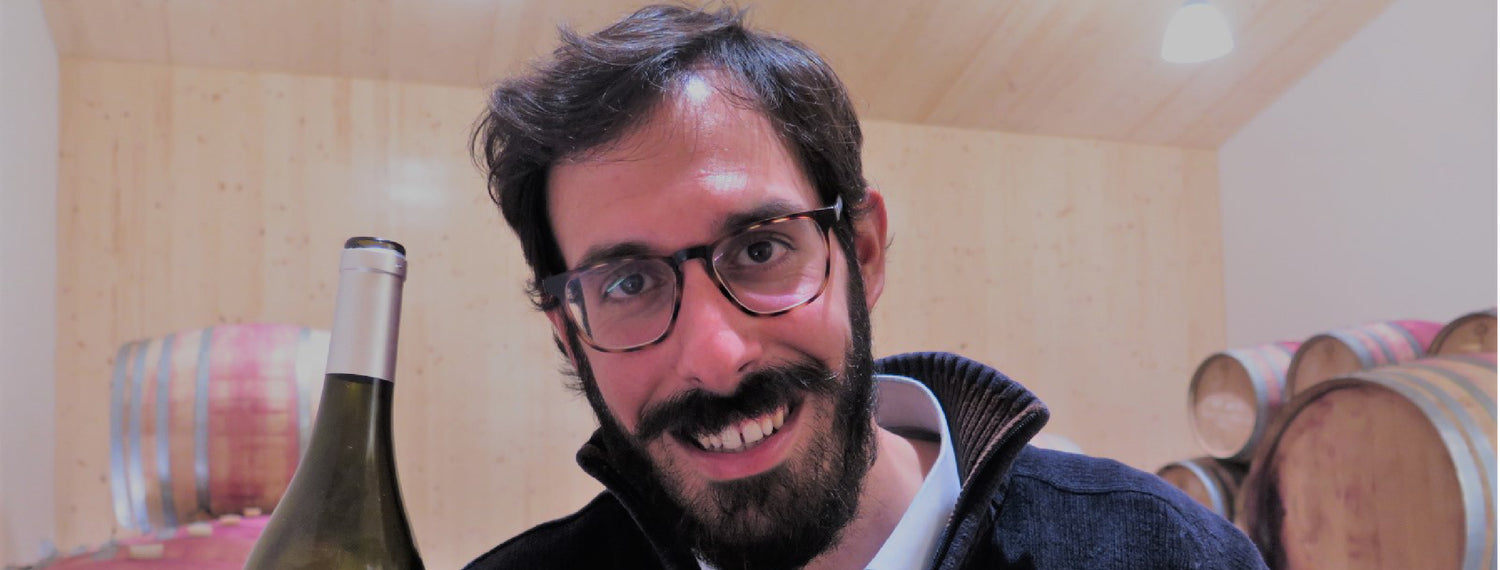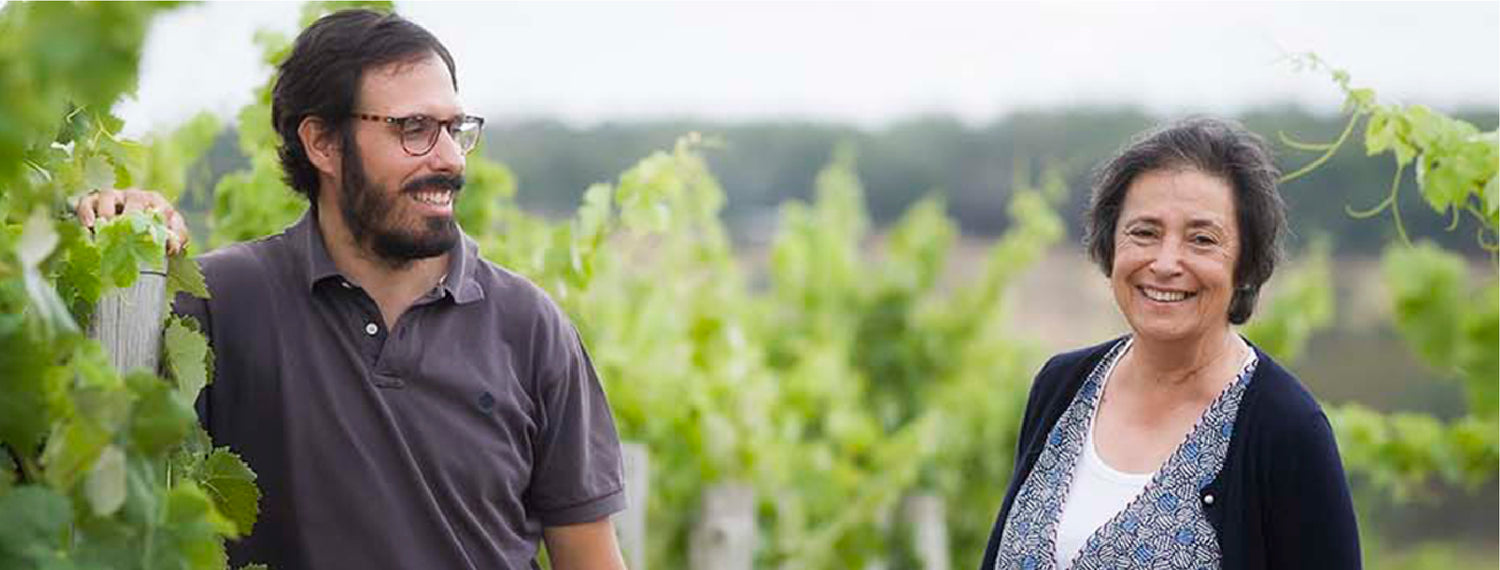Collection: Herdade do Cebolal

About the Producer
Herdade do Cebolal is nestled between the southern region of the Setubal Peninsula and the Alentejo. A crossroads of influences between the two wine-growing regions to which another influence is added, that of the Atlantic, right next door.
Part of the Setúbal Peninsula, in the lands of Santiago do Cacém, for Luís Mota Capitão, from the 5th generation at the head of Herdade do Cebolal, none of these regions "truly embraces Herdade do Cebolal within itself". He concedes, however, that the "Alentejo, perhaps, comes a little closer" taking into account the approach to the Vicentine Coast by some Alentejo producers. Therefore, Luis categorically states "my region is the Alentejo coast!".
Just by this indetermination of location, one can guess that the wines produced here will have an amalgam of influences that shape or determine their profile or the various profiles. The producer has already understood this, it is evidenced by the wines and those who taste them contemplate this evidence.
At the head of Herdade do Cebolal are Isabel and Luís Mota Capitão, 4th and 5th generations respectively. The property was founded in 1880 by Isabel's great grandfather. Later, the vineyards devastated by Phylloxera were replanted by her grandfather.
In the previous generation, Isabel's father was so fond of Cabernet Sauvignon that he went to Bordeaux to get some Cabernet Sauvignon plants and did the same by going to Romeira to ask for some Arinto vines.
With Luis taking charge of the oenology, he looks at the international castes with naturalness, without excluding or denying them, after all they have been planted in the estate for a long time and with this material he makes wines with history and with stories, as is the case of one of the wines, Caios. A tribute wine to his great-great-grandfather, Caio de Loureiro, an exceptional vintage wine, a non-regular edition, composed of a blend of vines planted for several generations. For Luís, it is as if he were making a wine made equally between him and his grandfather. Wine resulting from plots and castes, some planted since the time of his grandfather and others planted by Luis Mota Capitão.
Curiously enough, Caio de Loureiro's grandfather was a native of Cebolais de Cima, and it was his birthplace that gave the name to the estate when, at the end of the 19th century, he settled in Santiago do Cacém, on the Alentejo coast.
Luis and his mother gave the project new horizons and began a study of their 20 ha of vineyards and vineyards over 50 years old, identifying 5 microclimates and 12 types of soil, to the north with the predominance of limestone and schist further south. In the same career there are up to three different shades of soil. After carrying out this study, Luís began to work the plots differently, also taking into account their specific climatology. It soon occurred to him to make wines that would show the difference between the wines from the various soils, giving rise to a new project with the designation "terroir wines" or "vinhos de parcela". This gave rise, for example, to the various Castelão wines and also the Parcelas trilogy from lots of Alicante Bouschet, Touriga Nacional and Petit Verdot - the first introduced to the estate by his grandfather, the second by his parents and the Petit Verdot by Luís himself.
A decisive step in the present with the future in mind and driven by a strong awareness and concern for the challenges of environmental conditions is the decisive shift towards what they call regenerative agriculture.
Basically, it means creating "your own microclimate" and trying to deal naturally with the poverty of the land. Bringing the forest closer to the wine. They have 65 hectares of forest and new species have been planted, promoting the increase of biodiversity, favouring ecosystems, establishing airing corridors with trees and bushes that cool the air and help to lower the temperatures a little in hotter periods.
Water is also a fundamental issue. The totally dry vineyards are an objective. The introduction of new crop species chosen to create humidity and hydration in the soil, avoiding irrigation as much as possible, and at the same time carefully managing its use. They are working on the capture of algae that allows them to retain water and give moisture to their plants and to be as sustainable as possible.
It's a sustainable agriculture that looks at the whole. It's a broader perspective than the biological. It counts on the introduction of fauna that also contributes to the increase of organic matter in the soils. This heritage regeneration/restructuring work has led to the first 7 hectares already converted into Syntropic Agriculture, "an agricultural concept used to designate an agroforestry cultivation system and is characterised by balance, energy and environmental preservation, organisation, balance and integration. This type of agriculture is inspired in the functioning and dynamics of ecosystems".
In winemaking they are "wine artisans, respecting the authenticity of our terroir which translates into wines with personality, respect for the environment and low chemical intervention". It makes symbiosis between past and present by fermenting with stalks, doing co-fermentation, use of little wood, malolactic in whites, use of clay presses, blend of the same grape variety but with origin in different soils, an attitude that on the whole assumes concern in producing consistent wines, with respect for the final consumer. More than a standard, Herdade do Cebolal wants its style to be understood.
They want to reduce the quantities of sulphur, moderate alcoholic content wines and work towards intervening as little as possible, seeking to demonstrate the authenticity of the wine as much as possible.
Despite the wines' definition and stylistic message, here the wines are the result of 95% work in the vineyard and only 5% in the winery. In the vineyard they have a wide range of grape varieties such as Arinto and Fernão Pires, as well as Sauvignon Blanc, Boal, Encruzado, Antão Vaz, Roupeiro, Manteúdo, Castelão, Touriga Nacional, Syrah, Alicante Bouschet, Cabernet Sauvignon, Merlot and Petit Verdot, all ingredients for putting all that diversity into the bottle. In sharing this way of being, he has the oenologist and friend Rodrigo Martins by his side, recently, to support him in the viticulture and in the winery.
The new paradigm also involves lighter bottles, the use of natural wax as a result of the partnership with local beekeepers, the use of recycled paper for the labels, etc.
The wines express intense depth and rigour under the effect of where they are inserted, conditions such as freshness, elegance and character that are the intimate and matrix of the Herdade do Cebolal wines. The demand placed on what they do does not reject innovation and the search for new paths that make tasting wines an experience that does not only pass through the wine, but also through a way of being.
Wine tourism is also a well-structured offer, consisting of various visit and tasting programs, as Herdade do Cebolal is a partner in several projects inserted in the so-called Rota Vicentina.
-
Herdade do Cebolal Clarete 2019 Red
Vendor:Herdade do CebolalRegular price €19,69 EURRegular priceUnit price / per€0,00 EURSale price €19,69 EUR




